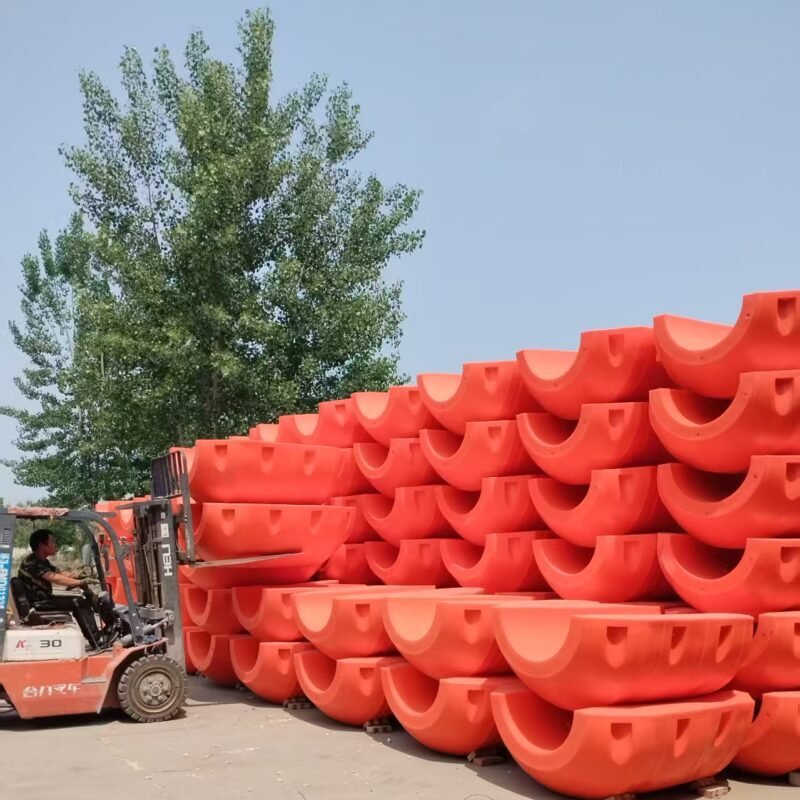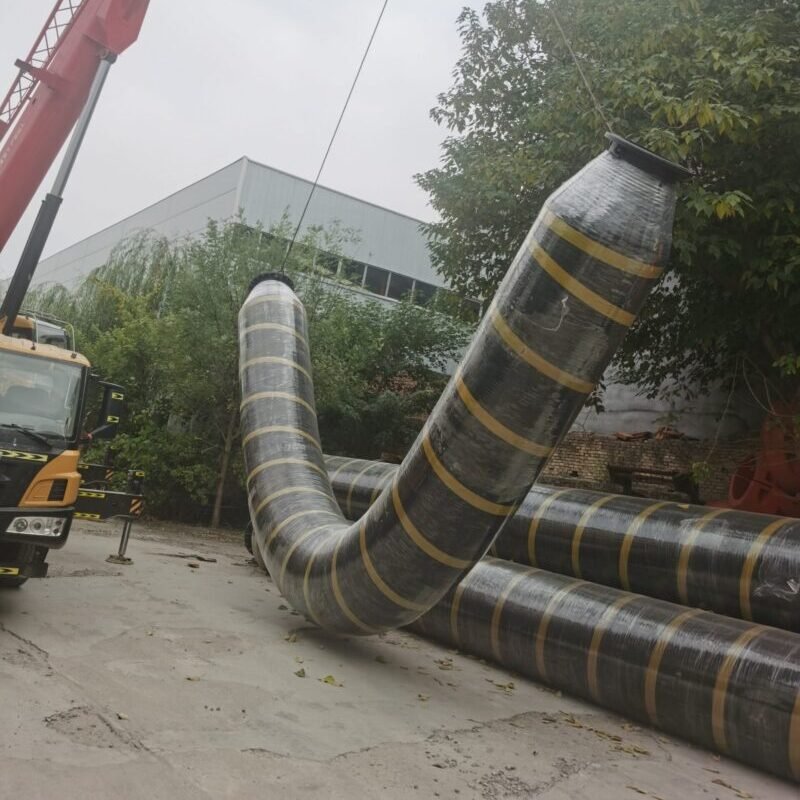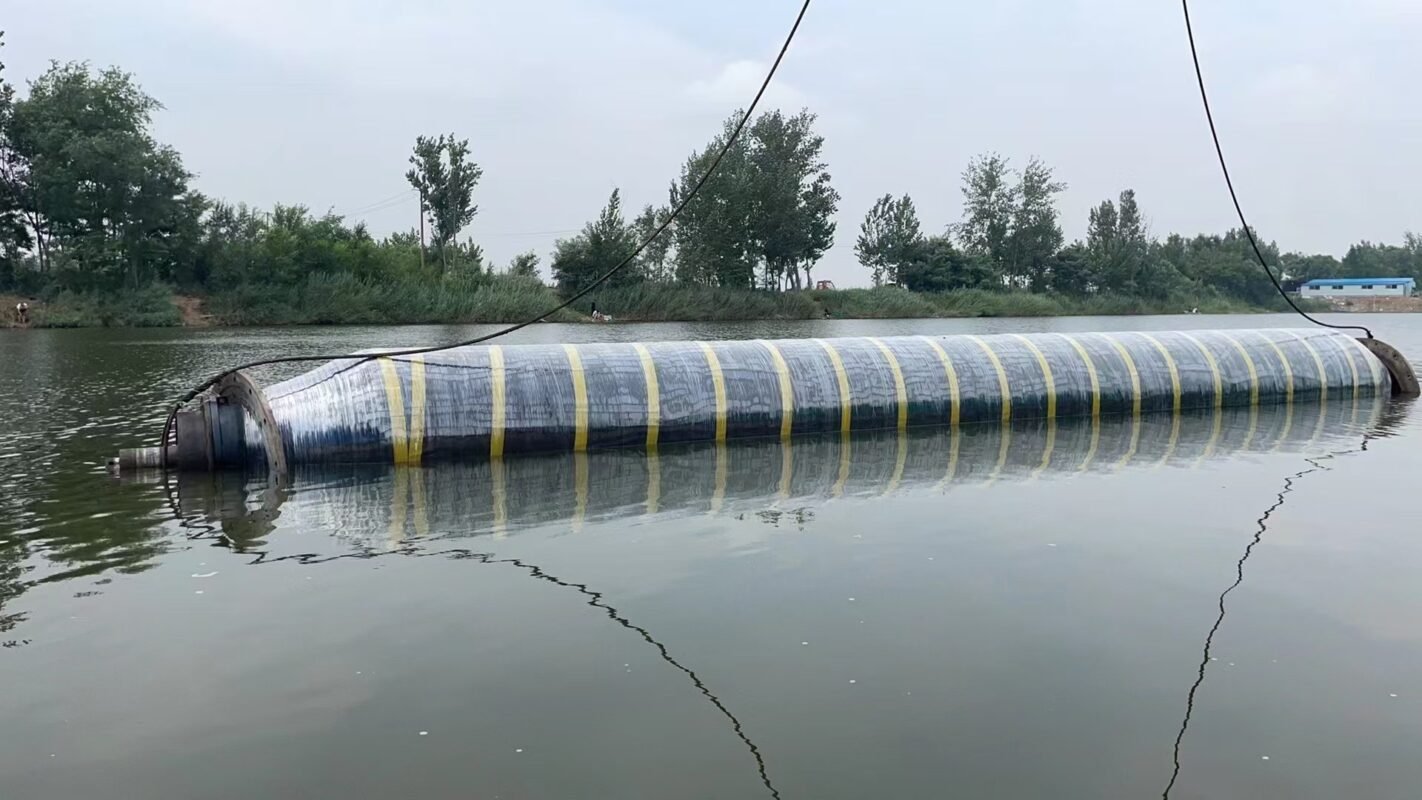Connection Floating Hose
A connection floating hose is a buoyant, flexible hose specifically engineered for fluid transfer between vessels, offshore platforms, or floating storage systems. These hoses play a crucial role in marine and offshore operations, ensuring the safe and efficient transfer of oil, chemicals, LNG, or other liquids while maintaining buoyancy on the water’s surface.
Features:Buoyant Construction:Connection floating hoses incorporate specialized buoyancy mechanisms such as foam floats, air chambers, or syntactic foam. These components keep the hose afloat, preventing it from sinking and significantly reducing drag in the water, thus ensuring seamless operation during fluid transfer.Flexible & Reinforced Design:
Constructed with multiple layers, including an inner tube, reinforcement, and an abrasion-resistant cover, these hoses offer exceptional flexibility. They are reinforced with materials like steel wire, textile braids, or synthetic fibers, providing enhanced strength and durability to withstand the rigors of marine environments.High-Pressure & Chemical Resistance:
Designed to handle a wide range of substances, connection floating hoses can safely transfer crude oil, diesel, LNG, chemicals, and seawater. They are engineered to resist UV radiation, saltwater corrosion, and extreme temperatures, ensuring long – term reliability and performance.End Connections:Equipped with various end connections, such as flanges, camlocks, quick-release couplers, or API fittings, these hoses ensure secure attachment to different systems. Some models feature tapered ends, which facilitate easier connection to hoses of varying sizes, enhancing versatility.Compliance with Marine Standards:Connection floating hoses adhere to strict industry regulations, including OCIMF, ISO 17325, API 17K, and other relevant standards. This compliance guarantees their safety, reliability, and suitability for use in critical marine and offshore applications.
Applications:Ship-to-Ship (STS) Transfer: These hoses are used to connect tankers during fuel or cargo operations, enabling the safe and efficient transfer of materials between vessels at sea.Offshore Loading/Discharge: They link FPSOs (Floating Production Storage and Offloading units), buoys, or platforms to vessels, facilitating the loading and unloading of goods in offshore environments.Emergency & Spill Response: In situations such as oil spills, connection floating hoses are employed for oil recovery or containment efforts, helping to mitigate environmental damage.Dredging & Mining: Used in floating setups, these hoses transport slurries or water, supporting operations in dredging and mining industries.
Types of Connection Floating Hoses:Standard Floating Hose:A general-purpose, buoyant hose designed for oil and water transfer, suitable for a wide range of common marine applications.Tapered Floating Hose:Features a gradually reducing diameter, which allows for smooth connections between hoses of mismatched sizes, providing enhanced compatibility.Reinforced Floating Hose:A heavy-duty option with steel wire reinforcement, ideal for high-pressure applications where robust strength and durability are required.LNG Floating Hose:Rated for cryogenic conditions, this hose is specifically designed for the safe transfer of liquefied natural gas, capable of withstanding extremely low temperatures.Chemical-Resistant Floating Hose:Engineered to handle acids, solvents, and other aggressive fluids, ensuring safe and reliable transfer of hazardous chemicals.
Advantages:Easy Deployment: Their lightweight and flexible nature enables quick and hassle-free installation, reducing downtime during operations.
Corrosion-Resistant: Built to withstand saltwater environments, these hoses offer excellent corrosion resistance, extending their lifespan and reducing maintenance costs.Shock Absorption: The design of floating hoses effectively absorbs shocks, reducing stress on connections during rough sea conditions and enhancing overall system integrity.Customizable Lengths: Typically available in 10m to 30m segments, these hoses can be connected to create longer runs, allowing for customization based on specific operational requirements.
Installation & Safety Considerations:Regular Inspections: Conduct routine checks for leaks, abrasions, or damage to the floats to ensure the hose’s integrity and safe operation.Avoid Sharp Bends: Prevent kinking or internal damage by avoiding sharp bends during installation and use, as this can compromise the hose’s performance and lifespan.Proper Lifting: Use appropriate lifting slings when deploying the hose to avoid putting excessive strain on it, ensuring its structural integrity.Follow Guidelines: Adhere to OCIMF guidelines for ship-to-ship transfers and other relevant safety protocols to ensure safe and compliant operations.





